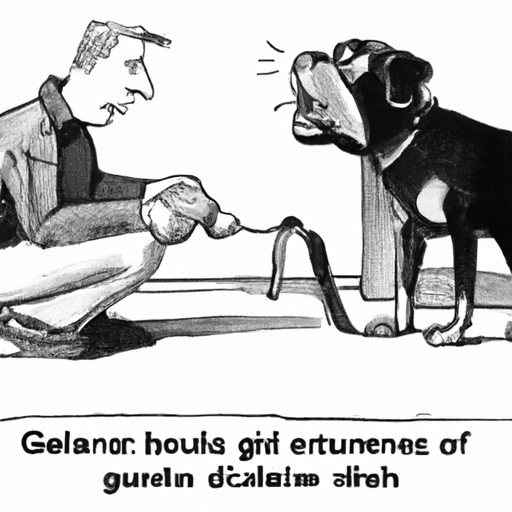As a dog parent, you’re likely to become concerned when you notice changes in your pet’s health or appearance. One such change that can be quite alarming is when your dog’s gums turn black. But there’s no need to panic just yet.
Table of Contents
1. Understanding Dog’s Gum Color
2. Causes of Black Gums in Dogs
3. When to Worry About Your Dog’s Black Gums
4. How to Keep Your Dog’s Gums Healthy
Key Takeaways:
– A dog’s gum color varies depending on its breed.
– Certain breeds naturally have black or spotted gums.
– Black gums can be a sign of oral health issues.
– Regular dental check-ups are essential for your dog’s oral health.
Understanding Dog’s Gum Color
The color of your dog’s gums can provide valuable insights into their overall health. Normal, healthy gums in dogs are generally a bubble-gum pink color. However, it’s not unusual for dogs to have black or black-spotted gums. In fact, this is a common trait in many breeds, including Chows, Pointers, Labradors, and Rottweilers.
Causes of Black Gums in Dogs
Genetics: Some dogs are born with black gums or develop them as they grow older. This is completely normal and not a cause for concern.
Pigmentation: Just like human skin, dog gums can have pigmentation. The pigmentation can be black, dark blue or other colors. This is a normal physiological process and is not harmful to your pet.
Oral Health Issues: Black gums can also be a sign of dental issues such as periodontal disease. This is a serious condition that can potentially lead to tooth loss, bone loss and other health problems if not treated promptly.
When to Worry About Your Dog’s Black Gums
While black gums can be a normal, genetic trait in some dogs, in others, it could be a sign of a more serious issue. If your dog’s gums have suddenly turned black or are accompanied by other symptoms such as bad breath, difficulty eating, excessive drooling, or visible discomfort, it’s time to consult your vet.
A sudden change in gum color could also indicate a more systemic issue such as heart disease or cancer. If you notice any sudden changes or are unsure, it’s always best to consult with your vet.
How to Keep Your Dog’s Gums Healthy
-
Brush your dog’s teeth regularly: Just like humans, dogs also require regular dental care. This includes brushing their teeth daily or at least a few times a week.
-
Provide dental chews: Dental chews can help remove plaque and tartar build-up on your dog’s teeth.
-
Regular vet check-ups: Regular vet check-ups help detect any potential dental issues early.
Remember, your dog’s oral health is an important part of their overall wellbeing. Staying informed and proactive about their dental care can help ensure they live a long, healthy life.
Frequently Asked Questions
1. Why are my dog’s gums turning black?
The gums of some dogs naturally turn black due to pigmentation. However, if the color change is sudden and accompanied by other symptoms, it might be a sign of oral health issues and you should consult a vet.
2. Are black gums in dogs a sign of disease?
Not necessarily. Many dogs, especially certain breeds, naturally have black gums. However, if your dog’s gums have suddenly turned black, it could be indicative of a more serious health issue.
3. How can I keep my dog’s gums healthy?
Regular dental care, including brushing your dog’s teeth and providing dental chews, along with regular vet check-ups, can help maintain your dog’s oral health.
Here are some helpful resources for more information:
From our own website, you might find these articles helpful:
- OneTopDog: Understanding Your Dog’s Health
- OneTopDog: Common Canine Oral Health Issues
- OneTopDog: Maintaining Your Dog’s Dental Health
Remember, when it comes to your dog’s health, it’s always better to be safe than sorry. Regular check-ups and a keen eye for any changes in your dog’s behavior or appearance can go a long way in keeping them healthy.



